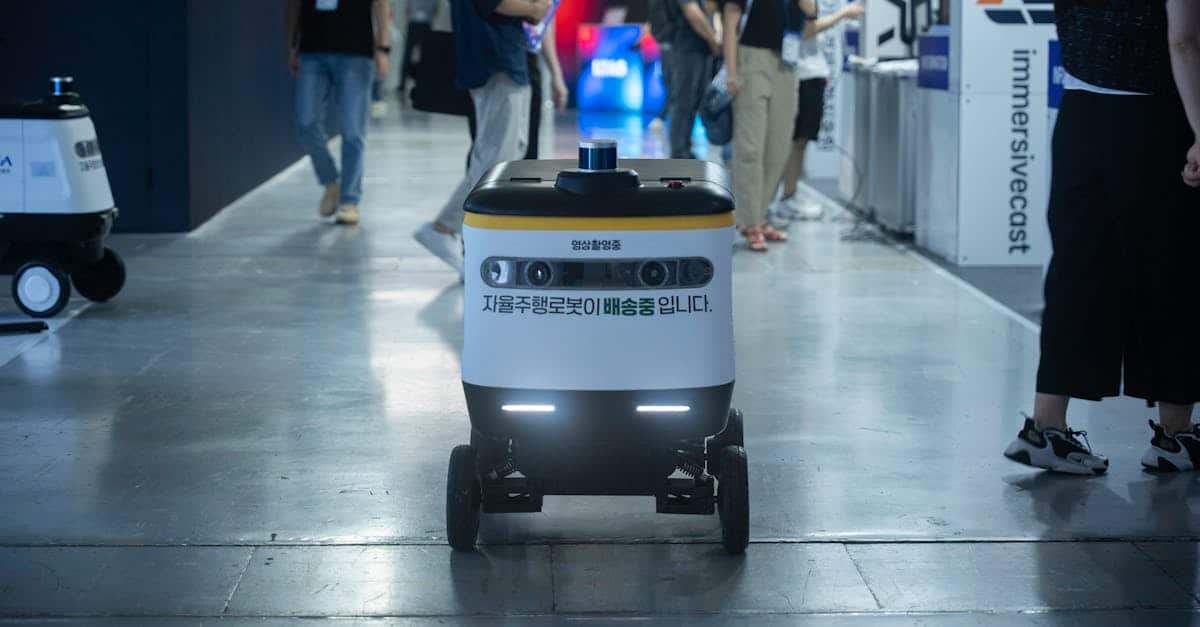Robotics is defined as a discipline combining science, engineering, and technology, dedicated to the design and manufacture of robots. These machines aim to perform a multitude of tasks, whether industrial, medical, or domestic. The stakes of robotics are vast, encompassing the automation of processes, improving quality of life, as well as revolutionizing sectors of activity. By learning to understand this discipline, one opens up to a future where interaction between humans and machines becomes increasingly daily and impactful.
Robotics is a multidisciplinary field that encompasses the design, construction, and use of machines called robots. These devices are programmed to automate specific tasks and can be equipped with sensors and actuators to interact with their environment. By merging different fields of study such as electronics, mechanics, computer science, and artificial intelligence, robotics allows for the creation of machines that can perform varied operations, ranging from industrial manufacturing to medical assistance.
The term “robot” comes from the play by Karel Čapek, “R.U.R.” (Rossum’s Universal Robots), which describes artificial creatures created to serve humans. In the following decades, robotics evolved to integrate increasingly advanced control systems, allowing robots to perform tasks autonomously or semi-autonomously.
One of the major issues of robotics is the productivity it can bring. In the industrial sector, for example, industrial robots optimize production lines, reduce costs, increase manufacturing speed, and minimize errors. Currently, millions of robots worldwide are engaged in various industries, demonstrating the growing importance of robotics in the modern economy.
Furthermore, medical robotics has revolutionized the healthcare field. Surgical robots assist doctors during operations, improving precision and reducing the risk of errors. Additionally, nursing robots provide support in caregiving tasks, allowing for better allocation of human resources in healthcare and increased attention to patients.
Another important issue is the ethical aspect related to the development of robotics. As robots become more autonomous, questions arise regarding their use in sensitive contexts such as the military or surveillance. The risks associated with machines capable of making decisions without human intervention require rigorous standards to ensure that they act ethically and responsibly.
Regarding the impact on employment, robotics raises concerns about the potential to replace human workers in certain professions. However, it is crucial to note that while robots can automate certain tasks, they also create new jobs. Cobots, or collaborative robots, are designed to work alongside humans, improving productivity without replacing the human factor.
The different types of robots illustrate the vast applications of this technology. Domestic robots, such as robotic vacuum cleaners, provide comfort in our daily lives. Service robots, more generally, are engaged in various sectors ranging from hospitality to logistics, facilitating tasks for humans and enhancing operational efficiency.
Finally, it is essential to mention the role of advancements in artificial intelligence in the field of robotics. AI enables robots to learn from their environment, analyze complex data, and adapt to various situations. This makes robotic systems not only more efficient but also more autonomous, increasing their utility across different sectors.

“`html
FAQ on Robotics
What is a robot? A robot is a programmable machine capable of performing tasks autonomously or semi-autonomously. It generally integrates sensors, actuators, and a control system to interact with its environment.
What are the main types of robots? Robots can be classified into several categories: industrial (factory automation), mobile (autonomous movement), humanoid (human form), collaborative or “cobots” (interaction with humans), and domestic (vacuum cleaners, personal assistants).
What is the difference between an AGV and an AMR? An AGV (Automated Guided Vehicle) follows predefined paths using physical markers, while an AMR (Autonomous Mobile Robot) uses sensors and algorithms to navigate autonomously in dynamic environments.
How are robots programmed? The programming of robots varies according to their complexity. Some use intuitive graphical interfaces, while others require specialized programming languages like Python or C++. Platforms like ROS (Robot Operating System) are commonly used.
What are the application fields of robotics? Robotics is present in manufacturing, logistics, healthcare (assisted surgery), agriculture (harvesting robots), space exploration, defense, and domestic services.
Can robots replace humans? Robots are designed to automate repetitive, dangerous, or precise tasks. They complement human abilities but do not fully replace them, particularly in areas requiring creativity, empathy, or complex judgment.
What is cobotics? Cobotics refers to the collaboration between humans and robots. Cobots are designed to work alongside operators, enhancing productivity while ensuring safety through sensors and force limits.
What are the ethical issues related to robotics? The main issues include responsibility in the event of an accident, data protection, impact on employment, and the need to ensure that robots act in accordance with human values.
How is robotics evolving with artificial intelligence? The integration of AI allows robots to learn from their environment, make more complex decisions, and adapt to various situations, making robotic systems more autonomous and efficient.
Where can one train in robotics? Many universities and engineering schools offer robotics programs. Online platforms also provide courses for different levels, ranging from the basics of programming to advanced robotic systems.











